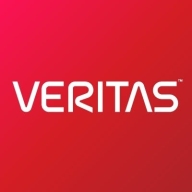

Teradata and Veritas NetBackup Appliance are key competitors in the data management and backup solutions market. Teradata stands out for its data processing speed and complex query performance, while Veritas NetBackup Appliance is praised for its compatibility and wide system support.
Features: Teradata offers fast data processing, adaptability, and a robust parallel architecture, with key functionalities like Throttle Columnar, Teradata Columnar/Temporal, and QueryGrid. Veritas NetBackup Appliance is known for its strong backup capabilities, particularly with VMware integration and deduplication technology, supporting databases and applications in varied environments.
Room for Improvement: Teradata's high costs and limited unstructured data support are notable drawbacks, along with scalability challenges. Veritas NetBackup Appliance could benefit from a simpler user interface and clearer cloud integration, alongside more transparent pricing and eased physical deployment.
Ease of Deployment and Customer Service: Teradata is efficiently deployed across environments with strong technical support, though complexities arise in smaller deployments. Veritas NetBackup Appliance offers deployment flexibility but faces mixed reviews about support responsiveness and pricing clarity.
Pricing and ROI: Teradata is costly but valued for performance and analytics, often justifying the expense. Veritas NetBackup Appliance, while also expensive, provides competitive pricing options and is seen as cost-effective when fully utilized, offering a strong ROI through its robust capabilities.
We have realized a return on investment, with a reduction of staff from 27 to eight, and our current return on investment is approximately 14%.
The immutability feature ensures customers do not incur costs in case of ransomware, allowing for a safe restore, which means they are avoiding ransom payments, and that is a big win for the customer.
Veritas NetBackup Appliance has helped reduce costs by 30% and has improved operational efficiency.
The customer support for Teradata has been great.
Customer support is very good, rated eight out of ten under our essential agreement.
The technical support from Teradata is quite advanced.
Their support is good, with technical teams available 24/7.
Veritas has a very good support infrastructure with trained engineers.
I contacted their support once, and the process was slow, which discouraged further contact.
This expansion can occur without incurring downtime or taking systems offline.
Scalability is complex as you need to purchase a license and coordinate with Teradata for additional disk space and CPU.
Teradata's scalability is great; it's been awesome.
I would rate the scalability of the product as a nine out of ten.
I find the stability to be almost a ten out of ten.
The workload management and software maturity provide a reliable system.
I am satisfied with its performance and would rate it ten out of ten for stability.
They do lab tests before releasing any patch, so currently, the product is stable.
Unlike SQL and Oracle, which have in-built replication capabilities, we don't have similar functionality with Teradata.
The most challenging aspect is finding Teradata resources, so we are focusing on internal training and looking for more Teradata experts.
Improving the interface could enhance user experience.
The only room for improvement is that the cost per terabyte is extremely high.
I believe they can do more to give customers more insight into their data, allowing them to see it and understand what they can do, such as archiving old data.
Teradata is much more expensive than SQL, which is well-performed and cheaper.
Initially, it may seem expensive compared to similar cloud databases, however, it offers significant value in performance, stability, and overall output once in use.
We spent roughly $295,000 on setup costs.
It's more costly than Commvault, which offers similar features at 70% of the price.
The price is slightly expensive for small and medium enterprises.
The cost of the product is reasonably priced.
Teradata's security helps our organization meet compliance requirements such as GDPR and IFRS, and it is particularly essential for revenue contracting or revenue recognition.
The data mover is valuable over the last two years as it allows us to achieve data replication to our disaster recovery systems.
The biggest advantage is that I do not need to manage backups on traditional tapes, which helps maintain total business continuity.
It integrates with monitoring tools like Splunk and supports automation through Python, Shell, or Ansible.
The Oracle Agent and Oracle RAC support are valuable features; they are crucial for taking backups and cloning applications.
| Product | Market Share (%) |
|---|---|
| Veritas NetBackup Appliance | 0.8% |
| Teradata | 0.3% |
| Other | 98.9% |


| Company Size | Count |
|---|---|
| Small Business | 26 |
| Midsize Enterprise | 12 |
| Large Enterprise | 49 |
| Company Size | Count |
|---|---|
| Small Business | 20 |
| Midsize Enterprise | 9 |
| Large Enterprise | 27 |
Teradata is a powerful tool for handling substantial data volumes with its parallel processing architecture, supporting both cloud and on-premise environments efficiently. It offers impressive capabilities for fast query processing, data integration, and real-time reporting, making it suitable for diverse industrial applications.
Known for its robust parallel processing capabilities, Teradata effectively manages large datasets and provides adaptable deployment across cloud and on-premise setups. It enhances performance and scalability with features like advanced query tuning, workload management, and strong security. Users appreciate its ease of use and automation features which support real-time data reporting. The optimizer and intelligent partitioning help improve query speed and efficiency, while multi-temperature data management optimizes data handling.
What are the key features of Teradata?In the finance, retail, and government sectors, Teradata is employed for data warehousing, business intelligence, and analytical processing. It handles vast datasets for activities like customer behavior modeling and enterprise data integration. Supporting efficient reporting and analytics, Teradata enhances data storage and processing, whether deployed on-premise or on cloud platforms.
Veritas NetBackup Appliance is a comprehensive data protection solution that combines hardware and software into a single, integrated platform. It offers scalable storage capacity, high-performance backup and recovery, and advanced deduplication technology. With its intuitive user interface and centralized management, it simplifies data protection operations and reduces administrative overhead.
The appliance supports a wide range of applications, databases, and operating systems, ensuring comprehensive protection for both physical and virtual environments. It also provides seamless integration with cloud storage, enabling organizations to leverage the benefits of hybrid cloud backup.
With its robust security features and built-in resiliency, the Veritas NetBackup Appliance ensures the integrity and availability of critical data, making it an ideal choice for businesses of all sizes.
We monitor all Backup and Recovery reviews to prevent fraudulent reviews and keep review quality high. We do not post reviews by company employees or direct competitors. We validate each review for authenticity via cross-reference with LinkedIn, and personal follow-up with the reviewer when necessary.